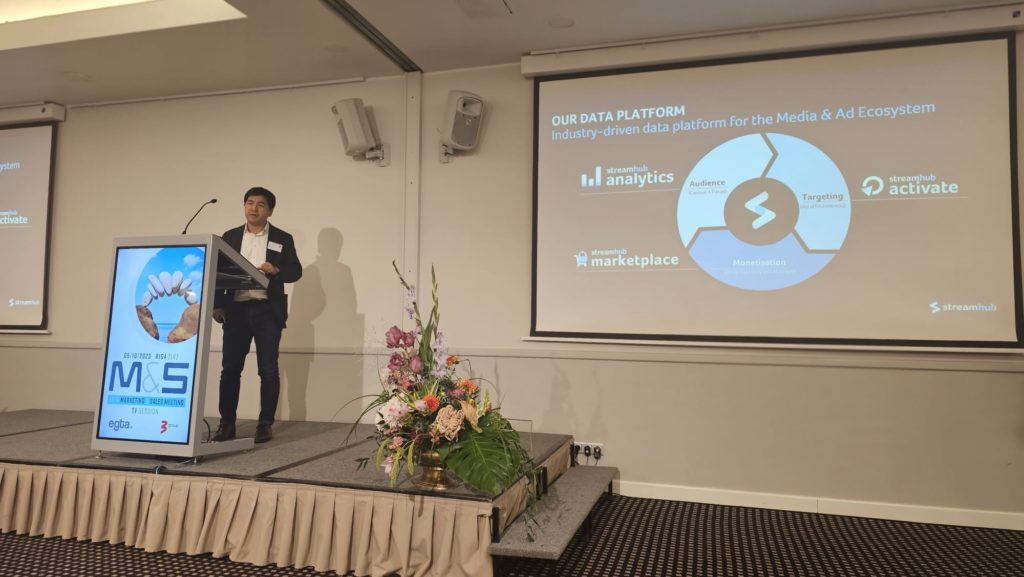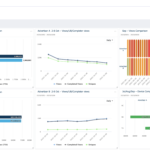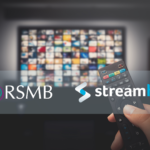
We made an exciting trip to Riga for EGTA’s 2023 Marketing & Sales meeting last week where we had the opportunity to understand the latest challenges in the TV advertising business across various European markets.
We were invited to present our views on TV’s quick shift to Total Video and the progress we made with our cross-platform measurement project called X-Flight to rapidly deliver unified reach metrics.
It seemed timely as the event started with Mindaugas Rakauskas, CEO of TV3 Group Latvia, explaining that following the fragmentation of audiences, ad sales had transitioned from siloed sales to mixed total video inventory packages. This was followed by accounts of similar shifts and the accompanying challenges across various markets.
Below we highlight the key topics that resonated most with our own mission to empower the Total Video ad ecosystem.

1. Are all impressions equal?
The debate here focuses on the differences in the values of an impression based on factors such as device, screensize, location, content, nature of the viewing experience alongside more traditional things such as duration and placement. On top of this we also believe that auditability and transparency of measurement will determine the value of an impression, an individual or a household. Such factors should be considered for inventories sitting behind walled-garden.
2. Useful reach is more important than incremental reach
The discussion here was around the fact that all walled garden players claim their reach is vastly incremental reach to TV but unproven. True incremental reach needs to be useful measurable reach.
3. Addressable linear TV opportunity
The industry survey by Altman Solomon confirmed that the number one opportunity for broadcasters is addressable linear TV advertising. This assumes that publishers will offer a larger variety of audiences beyond sociodemographics, better matching the needs of the advertisers both national and local.
Sky’s AdSmart is a pioneering example of both the technological capabilities and commercial success where year-on-year Sky is seeing tremendous growth in sales and customer numbers. Another exciting, nascent technology is the HbbTV standard that is making gradual progress with strong promises for addressability and ad replacement capabilities.
4. Data interoperability (liquidity)
Interoperability of data is posing challenges at different levels and stages of the media ecosystem. Arguably, the biggest disconnect is between the activation dataset and the post-campaign reporting. Resolving this could better bridge outcome-based and reach-based measurement, enabling more effective planning and yield management. Clean rooms are providing part of the solution but we feel that problems also need to be resolved in a more macro-level in relation to standardisation and shared cross-industry datasets. Such a measure would further empower initiatives such as the eGRP offering presented by Prima from the Czech republic.
5. “Access to accurate measurement data” is the undisputed top challenge and priority
Lastly, we wanted to focus on the European broadcasters’ call for “better measurement”. The survey mentioned the “overwhelming reliance on broader standardisation measures for resolution” and that “distributors need accurate measurement that properly blends ratings and streaming data”.
In the UK, CFlight, the cross-platform measurement standard initiated and developed by Sky and RSMB, has been adopted for use by agencies and broadcasters since 2022. The recent announcement by BARB to take over its governance and development is a tremendous step for the UK TV industry to lead the exploration in the new era of converged measurement.
The announcement of our Streamhub XFlight project jointly developed with RSMB was also in direct response to this growing need for broadcasters to offer a holistic, transparent and standardised method of cross-platform measurement for any market that needs it. With the 3 month POC coming to an end, next steps are to push the MVP into the market to drive the necessary consensus, but more importantly, to prove that XFlight can work across multiple markets just with a finite level of customisation.
If XFlight’s MVP is a success, this will mean that the capability to offer a standardised, modern and efficient measurement platform will become relatively simple to adopt and roll out into multiple markets. Furthermore, XFlight benefits from the capacity to also integrate any further census or multiple panel datasets to enhance the core measurement, and even link things directly for activation.

To summarise, we found that the top challenges confronted by broadcasters in Europe and around the world are universal. Whilst the approaches to resolving the issues have local nuances, the crux of the problem and the direction of travel for the solution is the same. TV has a great opportunity ahead but needs to modernise faster than ever to maximise the strength of TV whilst bridging its core business to all things digital.




